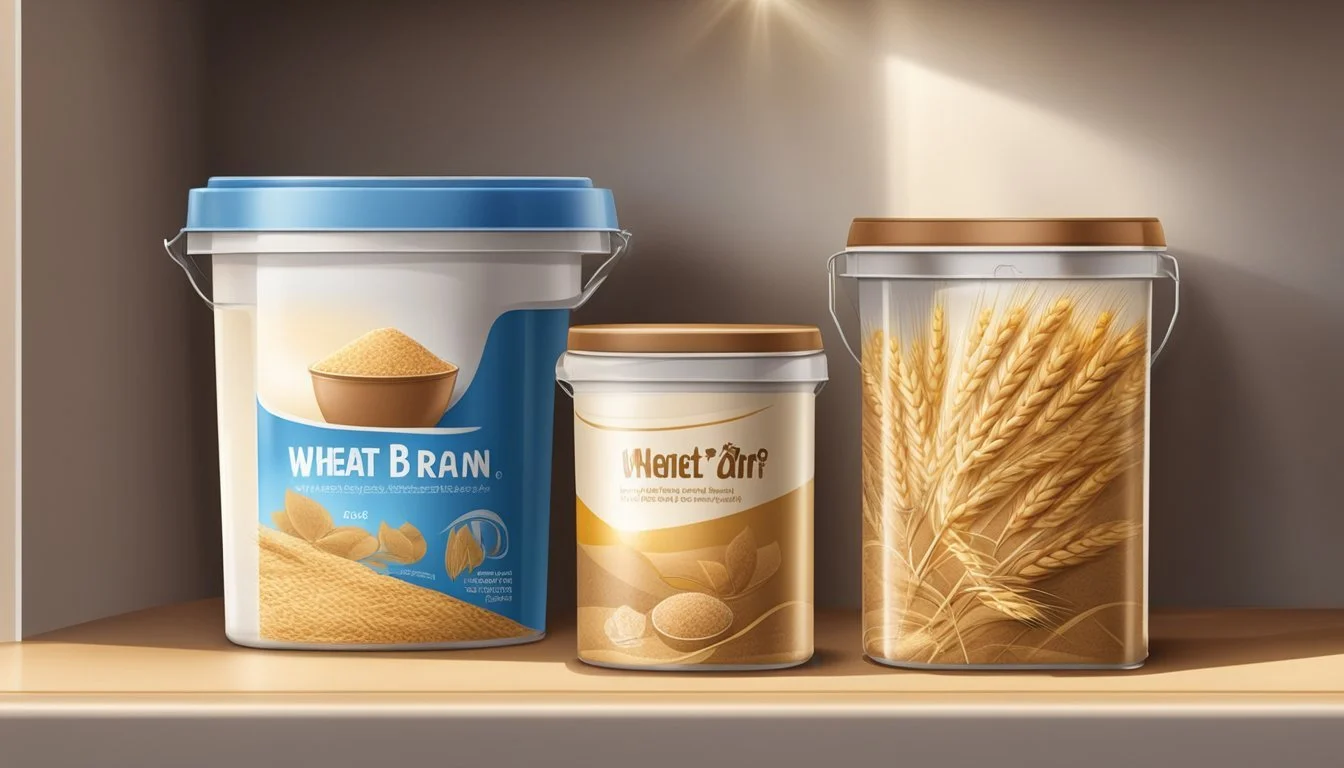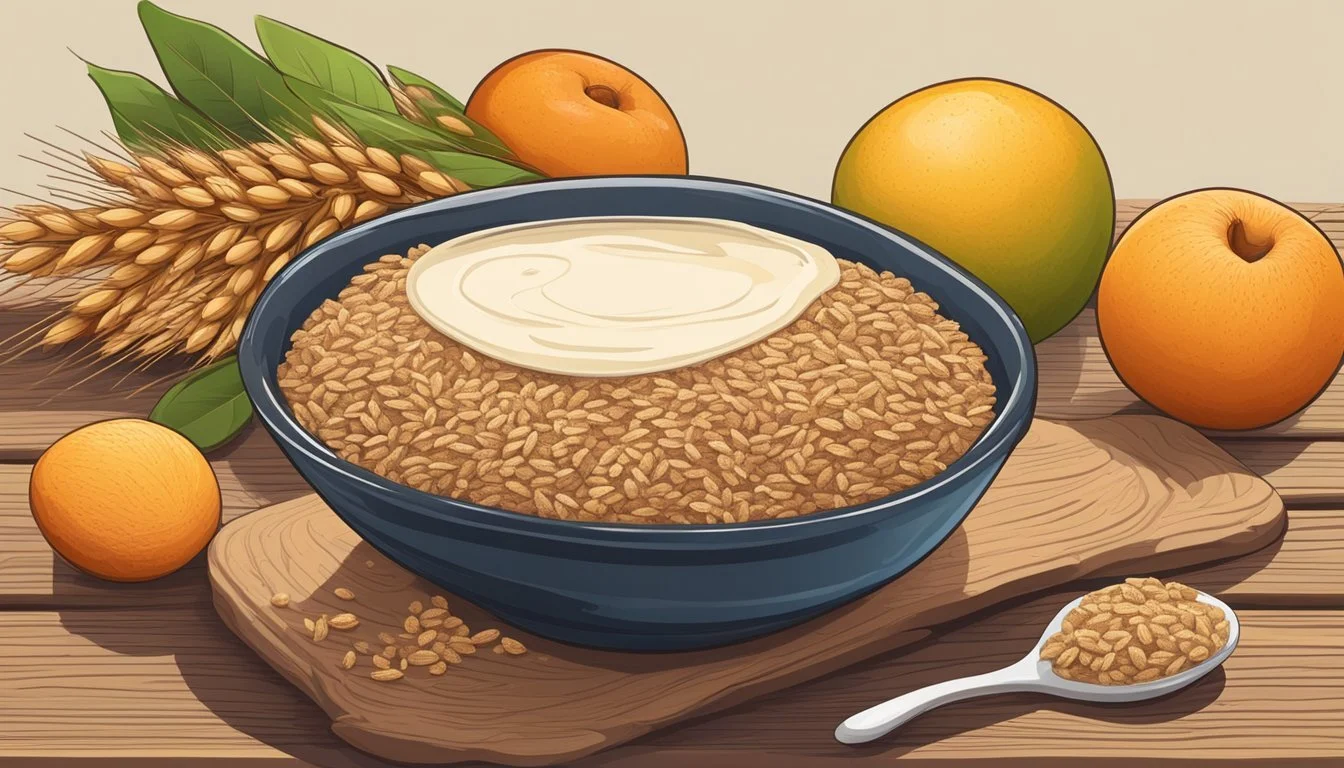Does Wheat Bran Go Bad?
Shelf Life and Storage Tips
Wheat bran, the outer layer of the wheat kernel, is highly valued for its rich dietary fiber and its benefits to digestive health. People often incorporate wheat bran into their diets to boost their fiber intake and improve overall digestive function. Wheat bran can go bad if not stored properly, which makes understanding its shelf life crucial for maintaining its nutritional value and safety.
Proper storage is key to extending the life of wheat bran. It should be kept in an airtight container and stored in a cool, dry place to prevent it from developing an off flavor and spoiling. Unopened packages can last several months beyond their expiration date if stored correctly, but once opened, its freshness begins to degrade more rapidly.
Consumers should always utilize their senses to detect any changes in color, texture, or odor of wheat bran. If any of these signs of spoilage are present, it's time to discard the product to avoid potential health risks. This simple practice can help ensure that your dietary fiber remains beneficial to your nutrition and digestive health.
Understanding Wheat Bran
Wheat bran is a highly nutritious component of the wheat kernel, offering a wealth of health benefits and essential nutrients. This section explores its composition, nutritional profile, and the numerous health advantages it provides.
Composition and Nutritional Profile
Wheat bran is the outer layer of the wheat kernel, comprising primarily the bran, germ, and endosperm. It is rich in fiber, protein, vitamins, and minerals. A half-cup (29 grams) serving contains:
Calories: 63
Protein: 4.5 grams
Fat: 1.3 grams
Carbohydrates: 18.5 grams
Fiber: 12.5 grams
Vitamins: Primarily B-vitamins such as niacin, thiamin, and riboflavin
Minerals: Iron, zinc, magnesium, and phosphorus.
Additionally, wheat bran contains phytochemicals and essential fatty acids which contribute to its health-promoting properties.
Health Benefits of Wheat Bran
Wheat bran offers several health benefits due to its high fiber content and nutrient density. It is notably effective in improving digestive health by promoting regular bowel movements and preventing constipation.
Moreover, wheat bran has been associated with a reduced risk of cardiovascular diseases, type 2 diabetes, and certain types of cancer. The dietary fiber aids in regulating blood sugar levels and reducing cholesterol.
Phytochemicals found in wheat bran also possess antioxidant properties that help in combating oxidative stress. The combination of protein, vitamins, and minerals further supports overall well-being and metabolic functions without exaggeration.
Factors Affecting Wheat Bran Shelf Life
The shelf life of wheat bran is influenced by various factors, mainly related to storage conditions. Ensuring proper storage can help extend its usability while maintaining its nutritional quality and taste.
Role of Moisture and Air
Moisture is a significant factor impacting wheat bran's shelf life. Exposure to high humidity can lead to mold growth and spoilage. To prevent this, it is crucial to store wheat bran in airtight containers which can safeguard it from moisture and air.
Air, or more specifically oxygen, can also affect wheat bran's quality. Oxygen can cause oxidative rancidity, leading to an off flavor. Using vacuum-sealed packets or bottles designed to minimize air exposure can help reduce the oxidation process.
Impact of Light and Temperature
Light, particularly UV light, can degrade the nutrients in wheat bran. Prolonged exposure to light can lead to loss of essential vitamins and minerals. It is best to store wheat bran in a dark place to protect it from light.
Temperature also plays a vital role. Wheat bran should ideally be kept in a cool environment, as high temperatures can accelerate rancidity. Storage in a cool pantry or even refrigeration can significantly prolong its shelf life. Avoid areas near heat sources or fluctuating temperature zones.
Adjusting these factors—moisture, air, light, and temperature—accordingly will help maximize the shelf life and quality of wheat bran.
Identifying Spoilage in Wheat Bran
Wheat bran can spoil over time, leading to changes that make it unsuitable for consumption. Key indicators of spoilage include alterations in color and texture, as well as noticeable changes in odor and taste.
Changes in Color and Texture
A noticeable change in the color of wheat bran can indicate spoilage. Fresh wheat bran is typically light to medium brown. If it turns darker or exhibits unusual spots, mold or other contaminants might be present.
Texture changes can also suggest that wheat bran has gone bad. Fresh wheat bran is slightly coarse and flaky. If it becomes clumpy or sticky, moisture intrusion is likely, which can lead to rancidity and mold growth.
Odor and Taste Alterations
Odor is a reliable indicator of wheat bran spoilage. Fresh wheat bran should have a mild, slightly nutty aroma. A sour, musty, or off-smell usually means that the bran has turned rancid or has been contaminated by mold.
Taste can also reveal spoilage. Wheat bran that tastes bitter or off, instead of its normal, slightly sweet and nutty flavor, should not be consumed. Tasting small amounts is sufficient to detect off-flavors associated with spoilage.
Proper Storage Techniques for Wheat Bran
Storing wheat bran correctly is essential to maintaining its freshness, nutritional quality, and ensuring its longevity. Here, we cover the best practices for choosing storage containers and optimizing storage conditions.
Container Choices
Selecting the right storage containers is crucial for preserving wheat bran. Airtight containers are the best choice as they prevent moisture from getting in, which can cause the bran to spoil. Glass containers with tight-fitting lids are ideal because they are impermeable and do not absorb odors.
Food-grade plastic containers are also suitable, provided they are tightly sealed. Sealable plastic bags, such as freezer bags, can be used for added convenience, but make sure they are thick and puncture-resistant.
Optimizing Storage Conditions
To maximize wheat bran's shelf life, store it in a cool, dark place. Temperatures should be consistently low to avoid moisture buildup, which can lead to spoilage. Placing the bran in the refrigerator or freezer is highly effective in preventing rancidity.
Ensure the wheat bran is stored away from the refrigerator or freezer door to maintain a stable temperature. Keeping it in the coldest part of the appliance, such as the back or bottom shelves, is recommended for optimal freshness.
Maximizing Wheat Bran Freshness
Maintaining the freshness of wheat bran involves proper storage techniques, whether the goal is short-term or long-term preservation. Paying attention to the storage environment helps prevent spoilage and maximizes shelf life.
Short-Term vs Long-Term Storage
For short-term storage, wheat bran can be kept in a cool, dry place, such as a pantry. Airtight containers are essential to protect against moisture and pests. Prepackaged wheat bran typically includes a best-by date, indicating the manufacturer's expected timeframe for optimal quality.
For long-term storage, freezing is a viable option. Ensuring that the freezer temperature remains stable prevents moisture buildup. It’s recommended to place the wheat bran in airtight containers or sealable plastic bags and store it in the coldest part of the freezer, away from the door.
Avoiding Common Storage Mistakes
Common mistakes in storing wheat bran include leaving it in its original packaging, which may not be airtight. Transferring wheat bran to glass or food-grade plastic containers with tight-fitting lids is crucial.
Another mistake is exposing the bran to fluctuating temperatures or storing it in humid areas. Consistent temperatures are key. Also, placing the container at the back of the refrigerator or freezer can help maintain a stable environment.
Bulk bin purchases require extra caution as they often lack airtight seals. Immediately transferring bulk wheat bran to appropriate containers upon purchase helps maintain its quality and freshness.
By following these storage tips for both short-term and long-term needs, the wheat bran will retain its nutritional value and flavor longer.
Incorporating Wheat Bran into Your Diet
Wheat bran is an excellent source of dietary fiber and essential nutrients, making it a beneficial addition to various meals. This section covers ways to include wheat bran in everyday foods and how to create a balanced dietary routine.
Everyday Foods Rich in Wheat Bran
Wheat bran can be easily added to common foods to enhance their fiber content and nutrition. Breakfast is an ideal time to consume wheat bran. One simple method is to sprinkle a couple of tablespoons of wheat bran over cereal or yogurt. This not only boosts fiber but also provides a crunchy texture.
Smoothies are another versatile option. Adding wheat bran to smoothies can increase their fiber content without altering the flavor significantly. Blending wheat bran with fruits, vegetables, and a liquid base like almond milk can create a nutritious and satisfying drink.
For those who enjoy baking, wheat bran can be incorporated into bread, muffins, and even cookies. Replacing a portion of whole wheat flour with wheat bran is an effective way to add fiber. Similarly, adding wheat bran to pancake or waffle batter can make breakfast more nutritious.
Creating a Balanced Dietary Routine
Incorporating wheat bran into a balanced dietary routine involves not only adding it to foods but also ensuring a varied diet. Consuming a mix of grains like rice, oats, corn, barley, brown rice, and whole wheat ensures a broad range of nutrients. Wheat bran complements these grains well due to its high fiber content.
For sustained energy and regular bowel movements, it is advisable to spread wheat bran intake throughout the day. Balanced breakfast cereals or bran cereals can provide a strong start. Including wheat bran in lunch or dinner by adding it to soups, stews, or casseroles ensures consistent fiber intake.
Lastly, maintaining hydration is crucial when increasing dietary fiber to avoid digestive discomfort. Drinking adequate water throughout the day allows wheat bran to aid digestion effectively. This balanced approach to incorporating wheat bran can support weight management and overall well-being.






